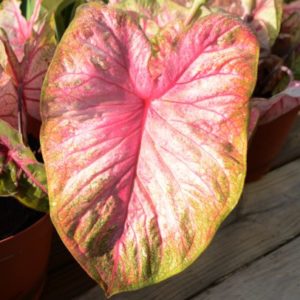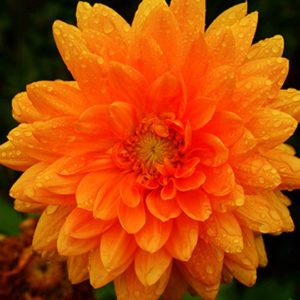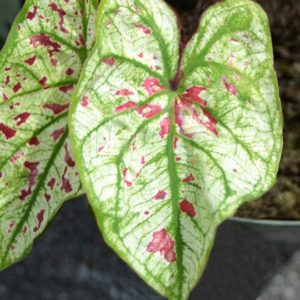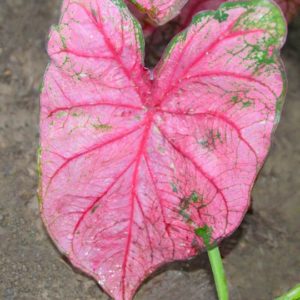Description
 Standard Potato Collection,
Standard Potato Collection,
Red, White, Blue
Harvesting History sells two kinds of potatoes: the fingerlings and the standards. Fingerlings are long, somewhat ‘finger-shaped’ potato. We will be discussing fingerling potatoes in our February 2, 2019 newsletter. The standard potatoes have a round or oblong shape.
Potatoes are members of the Nightshade family of plants which also include the Tomato and the Eggplant. The potato is native to the Andes mountain regions of Chile and Peru. Archaeologists believe that the potato was being cultivated by pre-Columbian farmers as early as 5000 B.C. Remains of potatoes have been found at Incan burial sites which date to 500 B.C. In 1540, the potato was discovered by Spanish explorers who eventually introduced the plant into Europe around 1560.
The potato was not popular in the United States until the mid-19th century. Many people thought that the tubers were poisonous and others did not like the yellowish color of the flesh. In 1811, The D. Landreth Seed Company introduced a potato with white flesh and this potato gradually gained acceptance.
The fingerling potatoes are long, finger-shaped potatoes. They are thought to be some of the most ancient varieties. Like many of our potatoes they are indigenous to the valleys of the Peruvian Andes.
In the 16th century, they were discovered by Spanish sailors who introduced them into Spain. In the 1800s, the French began to develop fingerling varieties, and it was from European immigrants that the fingerlings were introduced into North America.
Today, the potato is one of the most popular vegetables known. It has been accepted by most of the cultures on earth as a staple of their diets.
Harvesting History sells “certified seed potatoes”. Many of our customers ask us what this means. It actually is an excellent question.
“Certified Seed Potatoes” are potatoes that are harvested young, usually when they are quite small, but some varieties are very large when they are harvested, so size is not an absolute determining factor. The “Certified Seed Potatoes” are then stored for a number of weeks in a room with a constant temperature around 40 degrees Farenheit.
When they are removed from that room, they can then be sold as “Certified Seed Potatoes”. The process of harvesting young and then storing at a constant temperature somehow encourages budding in the tubers. The more buds you get – the more plants you can grow.
We sell a lot of seed potatoes, but we do not sell potato seed, but in the course of selling seed potatoes, the most frequently asked question is, “Is there such a thing as a potato seed?”
The people who ask usually preface their question with. “This is a dumb question, but…”. In fact, their question is anything but dumb, because the answer is quite complicated.
Some potato plants do produce a round, green fruit on their stems (above ground). This fruit contains solanine, so it is quite toxic. It also contains seeds, and potato plants will grow from these seeds and eventually produce tubers (potatoes).
Not all potato plants will produce fruit. The seeds contained in the fruit often do not produce potatoes that are anything like the parent plant, and often, the potatoes are quite nasty.
Seeds harvested from fruit in late summer or early fall can be dried and planted the following spring. The seeds can be started indoors. The seeds produce weak, stringy potato plants that then produce tiny tubers (potatoes). These tubers can be harvested and planted to produce a stronger plant that may produce standard sized potatoes. Often this process takes 2 years, but if you start early enough in the season, it can take about 8 months.
The reason that most potatoes are grown from tubers today is that it is the only way to achieve consistency. There are foodies who argue that consistently growing potatoes by ‘cloning’ (replanting tubers) is weakening the potato vegetable. This is a valid argument, but for every good potato produced from seed there are a hundred (maybe more) nasty ones produced from the same seed source.
There are companies now selling TPS (True Potato Seed). If you want to experiment, it is probably best to start with their seed. Mother Nature is always so very interesting.
At Harvesting History, we have two favorite stories that we often share with people when we are talking about potatoes. One is legend and one is historically accurate and verified. The legend has it that Sir Walter Raleigh introduced the potato into England. As we all know, Sir Walter had an ‘up and down’ relationship with Queen Elizabeth I. Returning from one of his excursions to the New World, he brought with him a large variety of produce and decided to have a lavish dinner to honor his benefactress, Queen Elizabeth I, and to introduce her and her court to some New World culinary treasures. One of these treasures was the potato.
Unfortunately for Sir Walter, he forgot to tell his chef what part of the potato plant to cook and so the chef cooked the plant with its leaves and stems and tossed the tubers. Queen Elizabeth I and her court arrived with great excitement to Sir Walter’s dinner and were regaled with a feast which included the highly toxic potato plants. The entire court became ill with various stomach problems and headaches including the Queen. Needless to say, following this event Sir Walter was not one of Queen Elizabeth’s favorites.
The second story is based on facts related to Charles Darwin, his treatise On the Origin of Species, and his travels in South America. In 1839, Darwin reached Guayteca Island in the Chilean Archipelago, Los Chonos. In his notes, he described observing an abundance of wild potatoes. Some plants, he wrote were as tall as 4 feet. During that trip he found one wild potato that resembled the English potato with which he was familiar. However, when cooked this potato was watery and inedible.
130 years later near a cave on Guayteca Island, the internationally respected plant collector, Carlos Ochoa, found the same potato. Agscientists believe that Darwin’s potato was cultivated by the indigenous peoples of Guayteca and developed into a dietary staple of the communities on that island. It is a credit to the accuracy and dedication of Darwin and the talent and commitment of Ochoa that this link to a century old plant could be and was established and verified.
Planting Potatoes in Your Garden
Potatoes are very easy to grow. Plant potatoes when the soil temperature has reached 45 degrees. They prefer a loose, loamy soil that is slightly acidic, but they are not fussy and will grow in almost any soil environment as long as the soil is not constantly wet. Potatoes should be rotated on a three year schedule which means that after three years they can be planted in their original beds. Several weeks before planting till a small amount of compost and dehydrated cow manure into the soil. Potatoes do not like very rich soil.
1-2 days before planting cut the seed potatoes into chunks. Each chunk should contain three ‘eyes’ or buds.
There are 2 schools of thought on planting potatoes – one suggests that you mound the potatoes, one suggests that you trench potatoes. If you are a ‘mounder’, plant the seed potatoes 6 inches deep, 15 inches apart, in rows, 2 ½ to 3 feet apart. When the stems of the plant are approximately 8 inches tall, mound dirt up around the stem burying half the stem. Repeat when the stems have grown another 8 inches. The mounding will prevent the potatoes from growing out of the soil.
If you are a ‘trencher’, dig a trench 15 inches deep and place the seed potatoes 15 inches apart, in trenches 2 ½ to 3 feet apart. Cover the potatoes with 6 inches of soil. When the stems of the plant are approximately 4 inches tall, fill in the trench around the stem burying the plant leaving only the top leaves exposed. Repeat when the stems have grown another 4 inches, and continue to repeat until you have filled in the trench.
Plant the seed potatoes 6 inches deep, 15 inches apart, in rows, 2 ½ to 3 feet apart. When the stems of the plant are approximately 8 inches tall mound dirt up around the stem burying half the stem. Repeat when the stems have grown another 8 inches. The mounding will prevent the potatoes from growing out of the soil.
Harvest baby potatoes 2-3 weeks after the plant has flowered. Harvest mature potatoes 2-3 weeks after the plant has died back in the fall. Harvest by digging around the plant about 12 inches from the stem. Potatoes can be as much as 12-18 inches deep. Potatoes can be harvested as long as the soil can be worked and, if mulched, can be harvested throughout most winters.
Planting Potatoes in Containers
Potatoes are actually easy to grow in containers and, today, most garden centers offer ‘potato sacks’ for growing potatoes. These ‘potato sacks’ are a great way to grow and are an efficient use of space. You can make your own potato sack by using the black heavy duty trash bags available at your hardware store. I would double them. Make sure you punch lots of holes in your potato sack because the most frequent problem with these sacks is water retention which rots the tubers and the plants.
To grow potatoes in containers, start in late winter. Line the container with 4 inches of soil like topsoil from the garden center. Do not use any specialty soil mixes. Remember, potatoes do not like rich soil. Place one chunk of potato with completely dried flesh in the center of the container and cover with 4 inches of soil. As the potato plant emerges from the soil, cover it with straw (not hay, straw) and continue to do so until you have stacked at least 15 inches of straw on top of the soil layer.
The potatoes will form along the stems of the plant. If you want new potatoes, remove some of the straw from the plant 2 weeks after the potato blossoms fade. Mature potatoes can be harvested 2 weeks after the plant dies back in the fall.
If you have limited space and are considering growing potatoes in containers, we suggest trying one variety each of a red, white and blue potato.
The following facts are essential for growing potatoes:
- Never plant potatoes in rich, well composted soil. Potatoes do best in average soil. Rich soil will cause them to develop scabs all over their skin and to look horrid.
- Potatoes are among the easiest of all vegetables to grow. YES, they can be grown, quite well, in tires. YES, they can be grown in black plastic bags as long as there are enough holes in the bags to allow for good drainage. YES, they can be grown, easily in containers. YES, they can be grown in straw. Potatoes need average soil, good drainage and full sun and nothing else.
- Potatoes should be rotated on a three year schedule which means that after three years they can be planted in their original beds.
- If you are just getting started raising potatoes, you should expect to get 5-10 pounds of potatoes per plant your first year. As you gain expertise, you can expect a healthy potato plant to produce 20-30 pounds of potatoes.
- If you are a young parent or a grandparent who has decided to garden with your children, there is no better vegetable to teach a child to grow than the potato. Together, you will learn so much, laugh so much and relish the process of gardening. It is memories like these that grow the best lifelong gardeners.
Planting Potatoes in the Ground
Planting Potatoes Phase II
Growing Potatoes in Tires
Different Types of Potatoes





